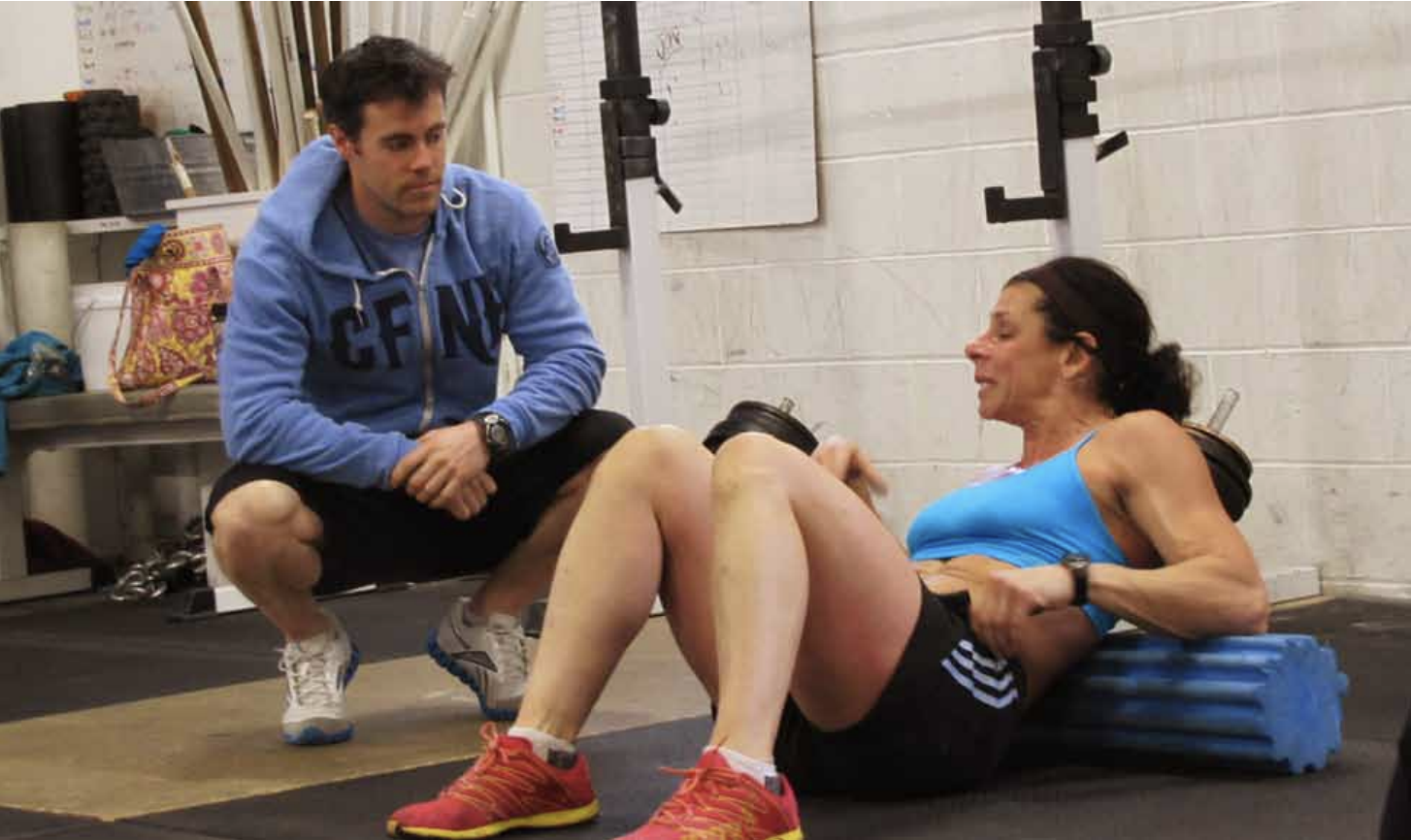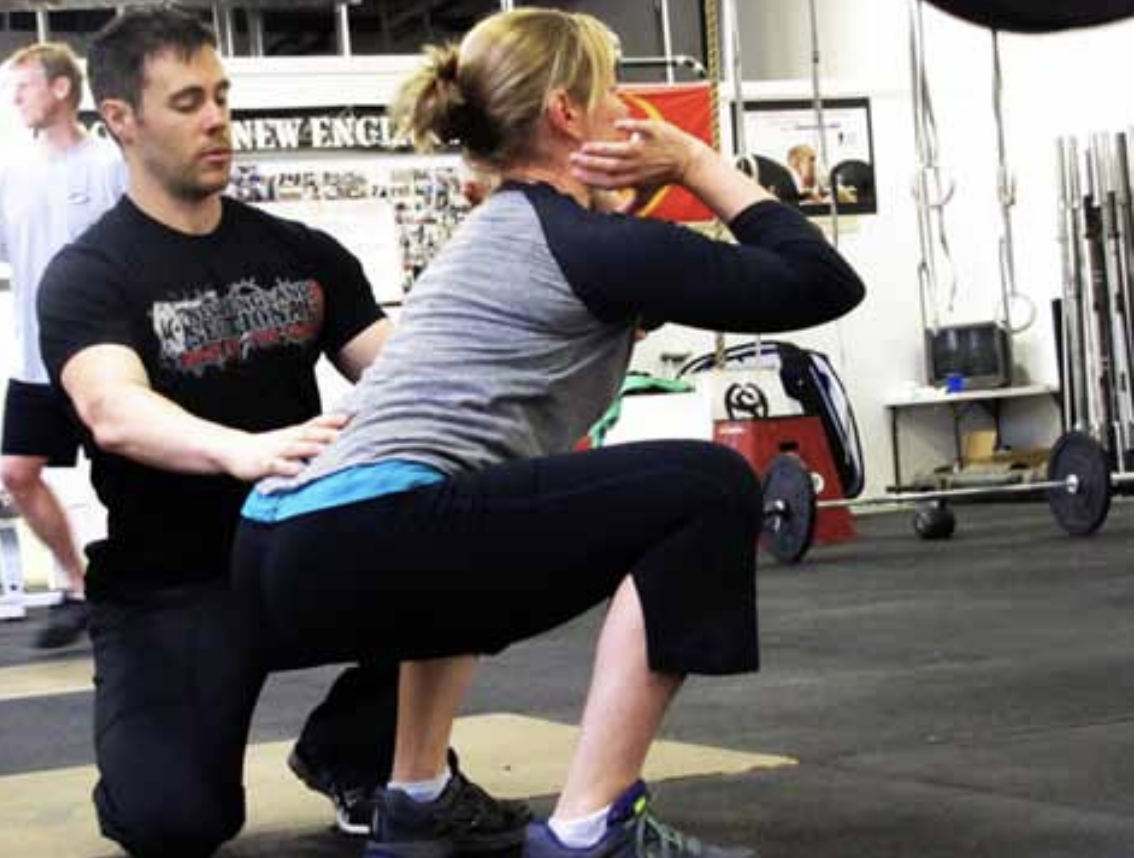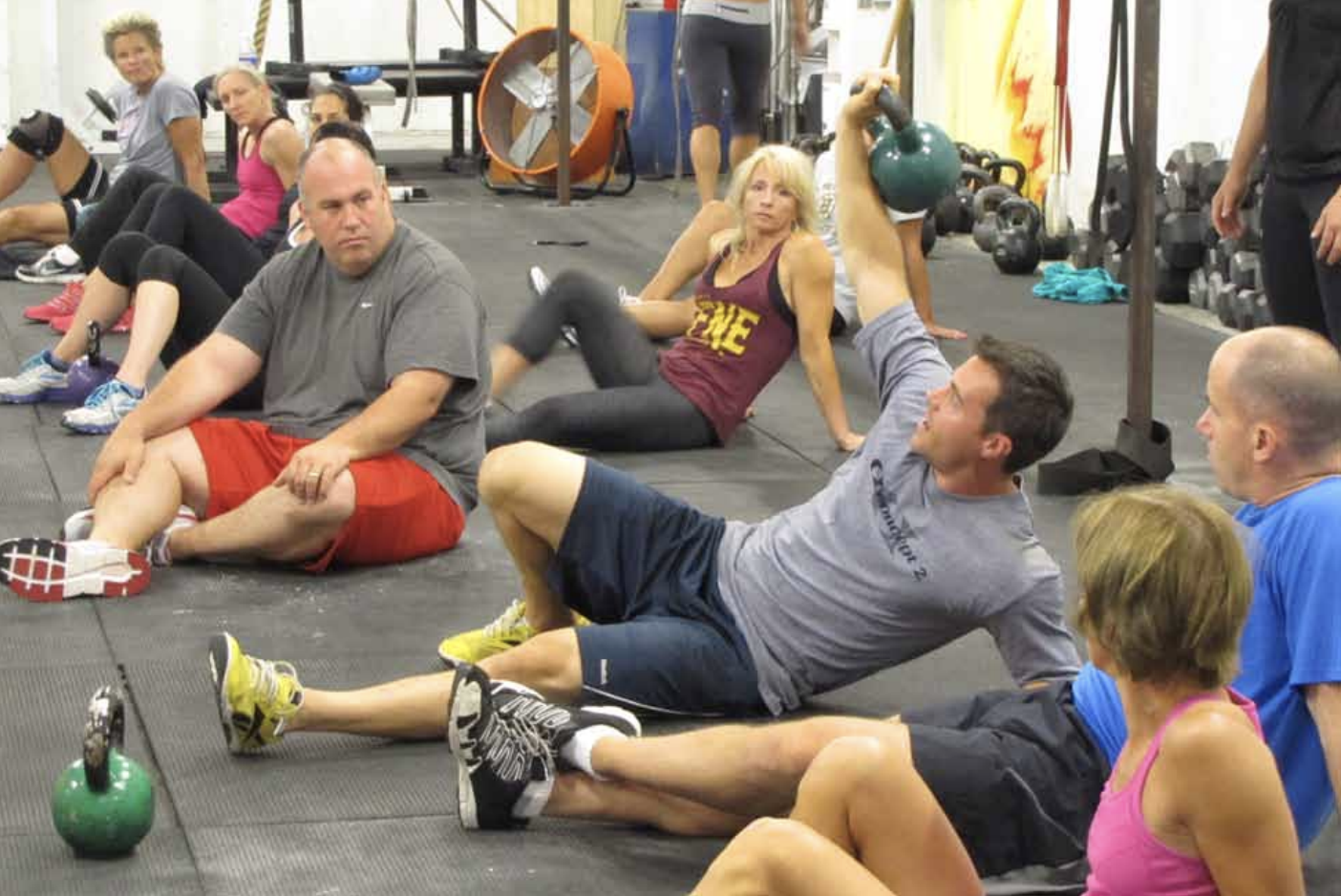The essence of CrossFit coaching is to get our clients to move better.
Good coaches can see faults and have the tools, knowledge and ability to correct these faults. If you can get your athletes to consistently move better, you are a considered a “good coach.
But what then makes a “great coach?”
I believe great coaches have the ability to go beyond the movements and connect with their athletes. I call this the “deeper side of coaching,” which is developing an awareness of your athletes’ potential, building trust and creating an atmosphere of success. The deeper side of coaching is about establishing and nurturing a strong relationship between an athlete and a coach. And I would argue this relationship is the foundation of our true goals as coaches: to improve the lives, health and happiness of our clients.

Awareness
The first and most powerful realization of the deeper side of coaching is the ability to see more than the movements. It is the ability to connect with your athletes, to read and understand them. It’s about getting inside their heads and recognizing what they are thinking and feeling.
The saying goes, “Treat others as you would want to be treated,” and this is exactly how good coaches treat their athletes. However, great coaches realize their athletes are different from them. They have different sets of principles, different upbringings, different motives and goals. Just because you like to be coached a certain way doesn’t mean your athletes like it. They don’t want to be treated like you want to be treated or treated like the athlete next to them; they want to be treated the way they want to be treated.
The Coach’s Prep Course material calls this “presence and attitude.”
“Presence and attitude reflect your interpersonal skills. A good trainer recognizes that each person has different needs and manner in which to be dealt. It is the trainer’s responsibility to determine how to relate and motivate each individual,” according to the course material.
“Awareness” means you are reading your athletes to find out what motivates them. What is the athlete capable of or incapable of? Adjust your coaching to that athlete. Is your athlete absorbing the message or is he lost? What cues and techniques does he respond to? Is he motivated by competition or turned off by it? Does he like the spotlight or the shadows? Does he learn visually or verbally? Is he in a good mood today? Is his mind somewhere else? Is he moving faster or slower than usual? Are you making a true connection with your athlete? What is his goal? Not everyone is training to get a better Fran time.
Reading and understanding your athletes is a powerful step toward developing the trust necessary for an excellent athlete-coach relationship.
Drill: Next time you are coaching, pick one athlete and try to read her and how she responds to your coaching. Really read her. Get inside her head. What is she feeling? How are your words affecting her performance? You don’t need to over-coach or say too much. Instead, put the effort into gauging her reaction to your words.

Trust
Trust is the foundation of any healthy relationship, and it is vital in the athlete-coach relationship.
Many coaches work months, seasons and years to build trust with their athletes because they know that trust yields results. Athletes who trust their coach will do anything the coach asks of them:
“Don’t eat bread anymore.”
“You got it, coach.”
“Do 100 pull-ups.”
“No problem.”
“Pour salt on my ripped calluses.”
“Love to.”
Good coaches attempt to create a trusting relationship by explaining the “whys” of coaching. They’ll justify themselves as knowledgeable leaders by saying things like, “We want to stay on the heels during the squat because it engages the posterior chain.” While this is certainly true and an important part of coaching, it doesn’t create a truly trustworthy relationship.
The great coach doesn’t try to create trust by showing how knowledgeable he or she is. The great coach creates trust by doing just the opposite: listening. And great coaches listen deeply and with sincerity. As Stephen R. Covey wrote in The Seven Habits of Highly Effective People, “True influence comes as others sense that you are being influenced by them.” This means really listening, instead of preparing what you are going to say as you wait for your turn to talk.
At CrossFit New England, we purposely set up down time between our classes so our coaches have the opportunity to talk—or should I say, listen—to members and build trusting relationships. Coaches are encouraged to spend five minutes after every class with a newer athlete to build the foundation of a trusting relationship.
As Covey stated, “If you really seek to understand, without hypocrisy and without guile, there will be times when you will be literally stunned with the pure knowledge and understanding that will flow to you from another human being.”
It isn’t even always necessary to talk in order to empathize. In fact, words might just get in your way.
The second key to building trust, and thus having the ability to influence others, is your character, your conduct and your ability to lead by example. If you live your life with integrity, others will feel confident in your leadership. As a coach, one of the most visible displays of this integrity is being loyal to those who are not present. It is easy and enticing to gossip about other members and athletes, but what comes across consciously or subconsciously to those around you is you are going to talk behind their backs when they are not around. Talking behind people’s backs, regardless of how lighthearted it seems, tears down the walls of a trusting relationship. Conversely, if you defend those who aren’t present you build trust in those who are present.
Drill 1: The next time you have a conversation with someone, don’t spend time preparing what you are going to say. Instead, just listen.
Drill 2: After the next class you teach, engage a newer member in five minutes of conversation. Talk about anything, but make it last five minutes.
Drill 3: Next time someone at the gym starts gossiping about someone who isn’t present, defend that person and watch the reactions of those present.

Coach the Positive
Most coaches are unaware of the power of their words and underestimate the effect of their influence on an athlete and his performance.
What a coach says to an athlete will be replayed in the athlete’s mind time and time again until it creates a selffulfilling prophecy. For this reason, it is important to be aware of how phrasing certain coaching cues can set an athlete up for success or failure.
Coaching statements like “you need to work on your gymnastics” reinforce the belief system in the athlete that he or she isn’t any good at gymnastics. And something as simple as “I can’t believe how fast you did that” tells the athlete that “as a coach, I don’t believe you. Did you count all your reps or skip a round, because you’re not that good?”
A simple change in the coaching approach and we could be setting up that athlete for success: “With your work ethic, you are definitely going to get better at gymnastics,” and “Wow, you were so fast today. Keep it up!” These latter statements are perceived by the athlete completely differently than the prior and will set up the athlete for long-term success.
The secondary motive for coaching the positive is that the subconscious mind can’t process the negative. It focuses on the action and ignores the negative term before it. For example, if during Grace you are coaching your athlete by repeating “Don’t put the bar down,” the subconscious mind of your athlete is actually hearing, “Put the bar down.” Instead, try changing the cue to, “Big set” or “Get one more.”
Similarly, if your athlete is on the last round of a running workout and you’re saying, “Don’t slow down,” what do you think is running through her head? The word “slow.” The mind will focus on the task that was coached. It is enlightening and empowering to know that words lead to actions, actions lead to habits, and habits dictate your destiny. Embrace this responsibility as a coach and use your words as weapons for good.
Drill 1: Coach your next class using only the positive sense and respect the power of your words.
Drill 2: Educate your athletes about the power of the positive and only allow for constructive thoughts and words in your gym.
Don’t try to implement all these drills at once. Focus on one. Gauge the reaction and reflect on what worked well and what didn’t and adjust.
Once you have some experience with these tools in one-on-one settings, use them to lead small groups, teams or classes. Great coaches have the ability to connect, establish trust and create an atmosphere of success with several people at once. In fact, these tools can be used outside the coaching setting all together. Try them with your spouse, friends and family and see if there is a greater connection with those in your life.
All photos courtesy of CrossFit New England.